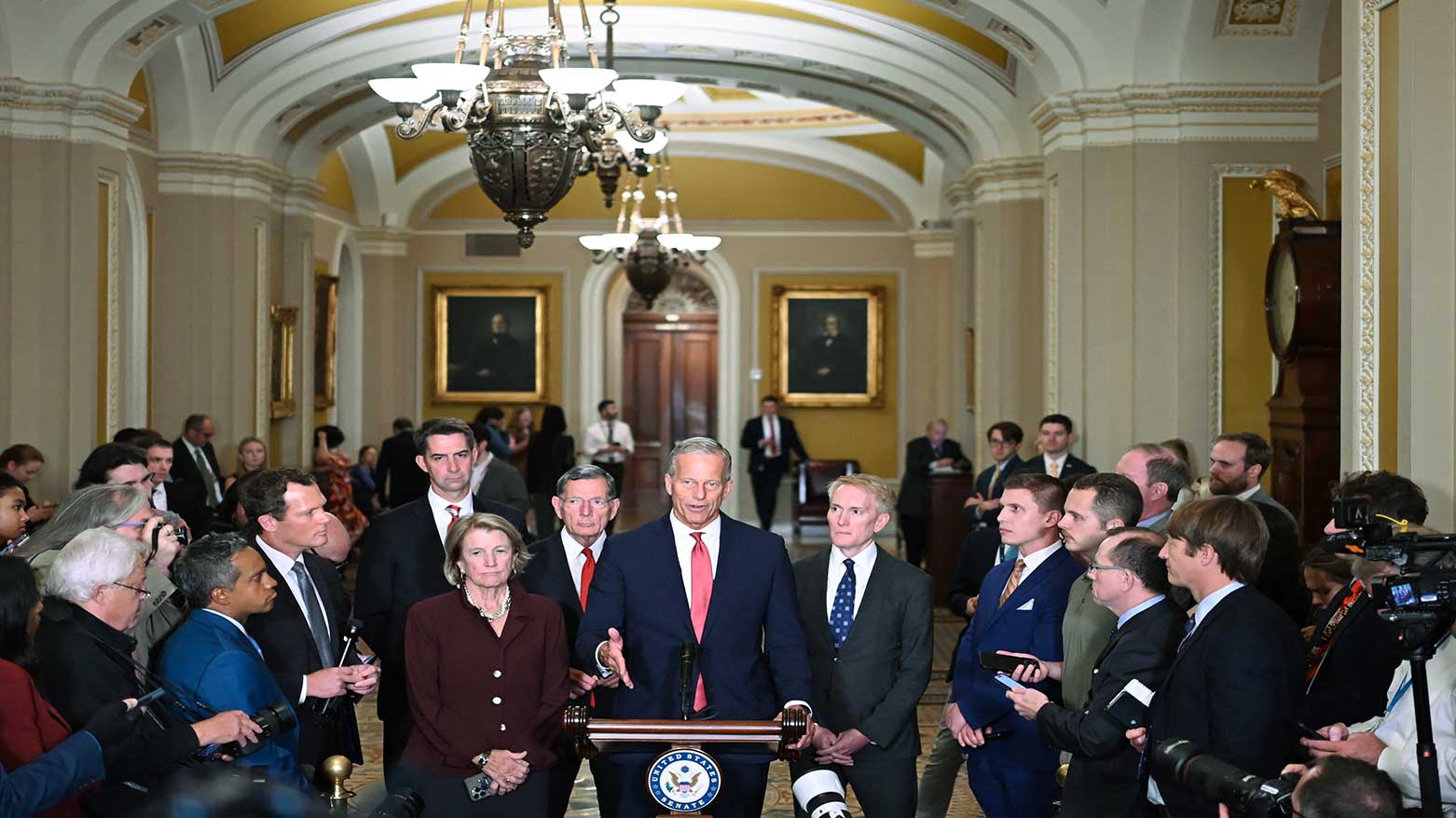U.S. Government Shuts Down Amid Fierce Partisan Budget Fight
Democrats demand health care subsidies as Republicans refuse to negotiate, leaving Washington in stalemate with 750,000 workers furloughed and key services in limbo.

ERBIL (Kurdistan24) — The United States plunged into a government shutdown at midnight Wednesday after President Donald Trump and congressional leaders failed to reach an agreement to extend federal funding, setting off a fresh cycle of political brinkmanship and economic uncertainty.
Roughly 750,000 federal workers are expected to be furloughed, and the Trump administration has warned of possible permanent layoffs as part of its push to shrink the federal bureaucracy.
While Trump’s deportation agenda is expected to continue unabated, key services in education, environment, and public administration are already facing disruption.
“We don’t want it to shut down,” Trump said at the White House before the deadline, though he has also vowed to take “irreversible” steps to target Democratic priorities.
A Familiar Political Standoff
This marks the third shutdown under Trump’s presidency — and the first since his return to office — highlighting the deepening partisan divide in Washington. Democrats, who typically prioritize keeping government operations running, have this time drawn a hard line, insisting on renewed funding for health care subsidies under the Affordable Care Act (ACA).
Millions of Americans face soaring insurance premiums as the subsidies expire.
Republicans, holding a 53-47 Senate majority, have refused to negotiate under the looming deadline and instead pushed a short-term stopgap bill in the House. But the measure repeatedly failed in the Senate, where 60 votes are needed to advance any funding legislation.
Democratic leader Chuck Schumer, under pressure from the party’s progressive flank, has insisted health care affordability must be addressed.
“Americans are hurting with higher costs,” Schumer said after Tuesday’s failed vote.
House Speaker Mike Johnson, by contrast, blamed Democrats for the closure. “They want to fight Trump,” he told CNBC, “and a lot of good people are going to be hurt because of this.”
Services in Limbo
Essential functions such as Medicare, Medicaid, the Pentagon, and most Homeland Security operations will continue, though staffing shortages could delay services.
The Smithsonian museums are expected to remain open until Monday, while the National Park Service faces calls to shutter sites entirely to protect public safety and resources.
Trump has threatened to target programs “that Democrats like,” raising concerns of politically motivated funding cuts. Former national park officials warned that leaving sites open with minimal staff could prove dangerous both for visitors and the environment.
Economic Ripples on the Horizon
The economic fallout could be felt quickly. The Labor Department is due to release its monthly jobs report Friday, though the shutdown may delay or cancel its publication.
Analysts at Goldman Sachs noted that markets often “shrug” off shutdowns, but with little sign of negotiations this time, the impact could be more severe.
Rachel Snyderman, a former White House budget official now at the Bipartisan Policy Center, said shutdowns only generate “economic cost, fear, and confusion across the country.”
The Trump administration has gone further than in past closures, preparing not only for furloughs but also permanent job cuts across federal agencies.
Russ Vought, head of the Office of Management and Budget, has framed the move as part of a mission to overhaul government efficiency.
A History of Shutdowns, a Future of Uncertainty
The U.S. has faced shutdowns before, most notably the record 35-day closure during Trump’s first term when Congress refused to fund his proposed U.S.-Mexico border wall.
In 2013, a 16-day shutdown under President Barack Obama stemmed from Republican demands to repeal Obamacare.
This latest standoff underscores the entrenched dysfunction of Washington politics, where compromise has become elusive and brinkmanship increasingly routine.
Forward-Looking: How Long Could This Last?
Observers warn the current impasse could stretch for weeks, if not longer, given the hardline positions of both parties. Trump appears determined to use the shutdown as leverage to weaken Democratic priorities while advancing his deportation agenda, a strategy that could resonate with his political base but risks alienating independents and moderate Republicans.
For Democrats, holding out on health care funding carries political risk as well, since shutdowns traditionally erode public trust in Washington across the board. But with millions of Americans facing steep insurance premium hikes, their insistence on ACA subsidies could become a rallying cry ahead of next year’s congressional elections.
The longer the shutdown drags on, the more pressure will mount on lawmakers from business leaders, state governments, and ordinary citizens who depend on federal programs.
Wall Street and credit rating agencies may also play a decisive role, particularly if prolonged instability undermines U.S. financial credibility.
In the end, the shutdown’s duration may hinge less on formal negotiations than on which side feels the greater political cost — a test that could reshape the balance of power in Washington for the remainder of Trump’s term.
